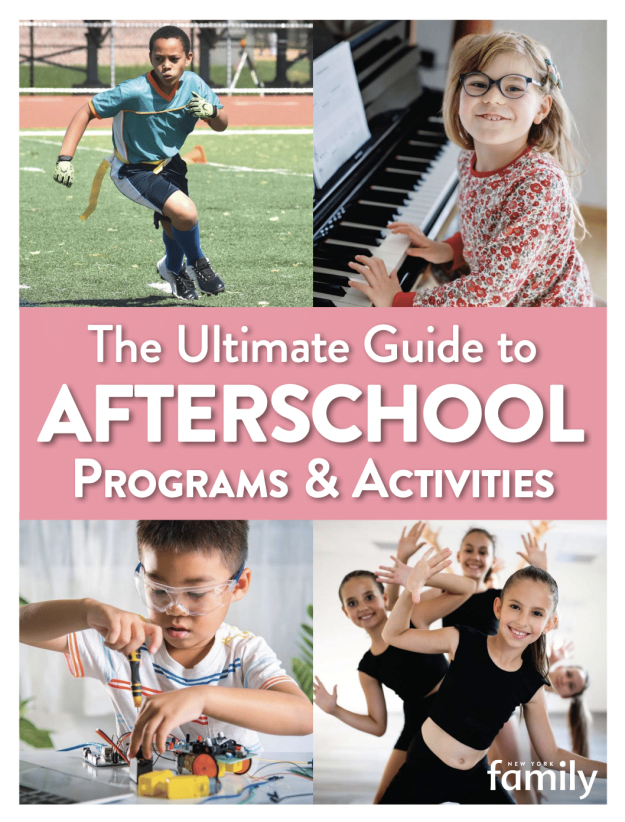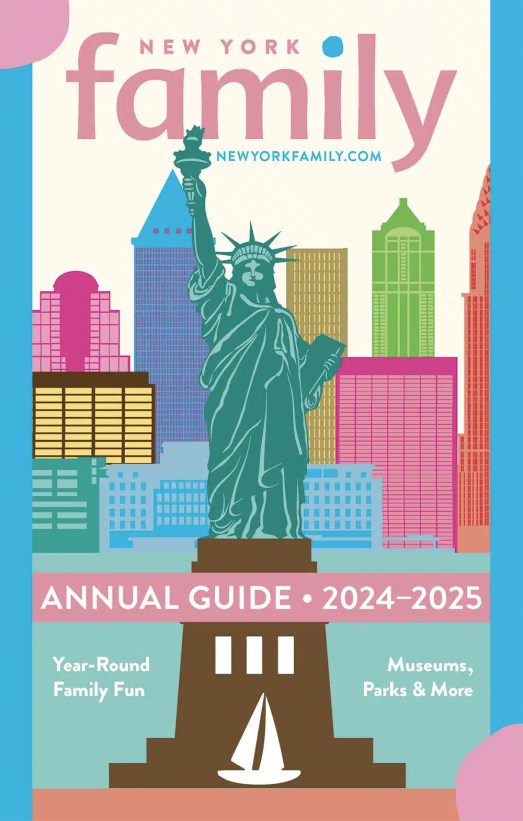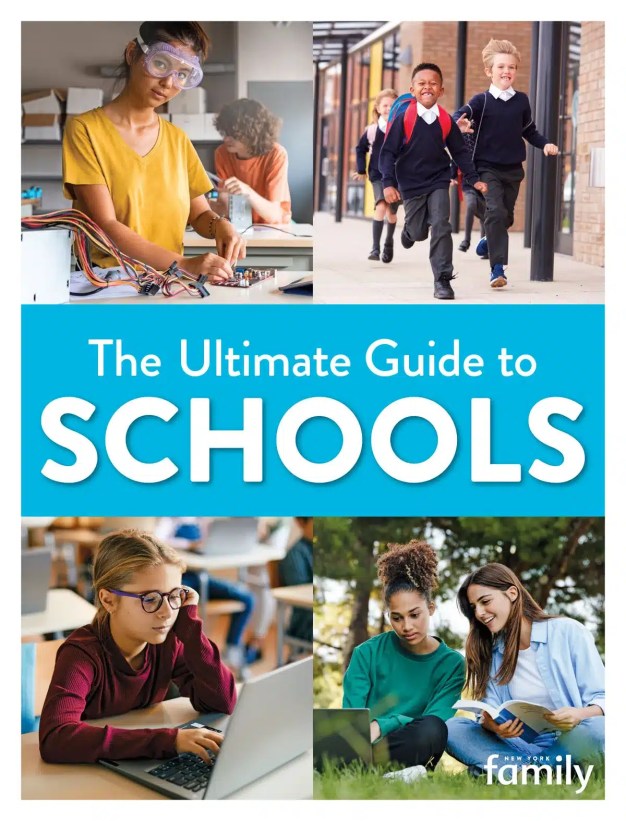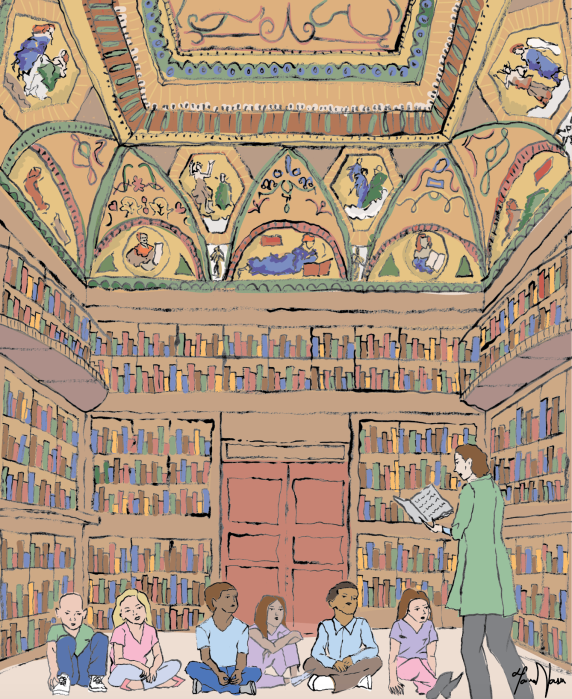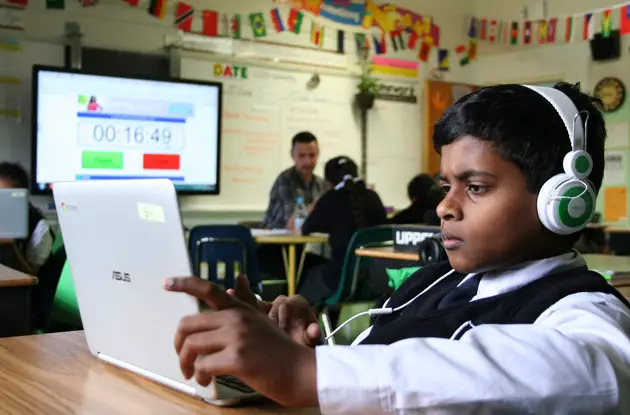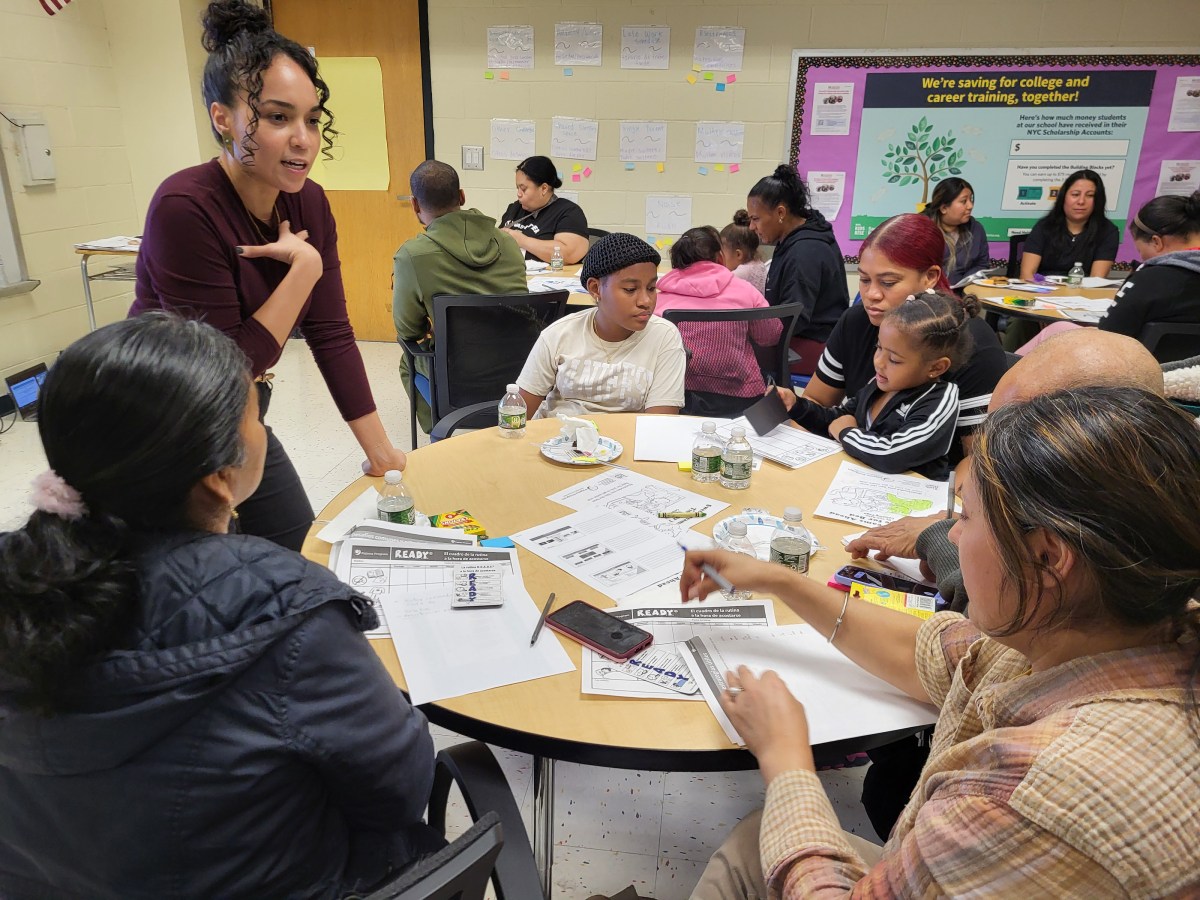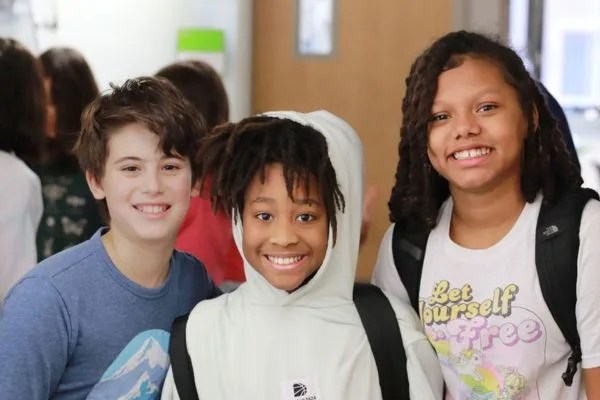 Most parents think their child is gifted. And, of course, they’re right. Every child is gifted at seeing the world with a freshness that adults lost long ago. Most kids say and do things that surprise and impress. And most kids have a passion or two that, with the right nurturing and support, they’d be truly gifted at. But there are also particular kinds of intellectual giftedness for which there are specific definitions, standards, and tests that school systems typically use to determine entry into their coveted Gifted & Talented (or G&T) programs.
Most parents think their child is gifted. And, of course, they’re right. Every child is gifted at seeing the world with a freshness that adults lost long ago. Most kids say and do things that surprise and impress. And most kids have a passion or two that, with the right nurturing and support, they’d be truly gifted at. But there are also particular kinds of intellectual giftedness for which there are specific definitions, standards, and tests that school systems typically use to determine entry into their coveted Gifted & Talented (or G&T) programs.
Between its various school systems—public, private, charter, and parochial—New York City probably has more good options for gifted children than most municipalities. But even here, there aren’t enough gifted programs for all the children who qualify for them, and there are undoubtedly children who belong in gifted programs but never had the opportunity because their parents either didn’t recognize their abilities or didn’t know of the special options out there. We’re here to help with recognizing giftedness in your child and getting to know the best local options for gifted children.
Is Your Child Gifted?
For some perspective about what giftedness looks like in young children, there are few as experienced as Connie Williams Coulianos, the head of school at Speyer Legacy School, a private school for gifted students. She had previously been the director and master teacher at Hollingworth Preschool at Teachers College, Columbia University, which also focuses on gifted children. For Coulianos, the term “gifted” is “loaded.” Instead, she prefers to describe Speyer students as “advanced learners” because, “their learning is at a pace and an intensity beyond what is typical. They are children who become passionate about a particular topic, for example, makes of cars, the subway system, the solar system.”
Most children have interests and passions, of course, but what marks the gifted, in Coulianos’ experience, is that “while gifted children often have a quantitative acquirement of skills early on, there is also a qualitative difference in thinking: The children demonstrate a need to classify, categorize, and explain. This is the mark of a gifted child.”
A phrase that has gained popular usage amongst educators is the gifted child’s “rage to master.” For this kind of child, the desire to learn and understand translates to an urgency that is immediate. They need to know, even if they are not necessarily loud and vocal. In Coulianos’ experience, another common type of accelerated learner has almost an ethereal aspect. “Then there is the dreamy child,” she says, “who creates worlds and people and scenarios and countries. In addition to learning about the world that is, this child also creates a world of their own in ways quite compelling.”
Determining whether a child is gifted or not is, in Coulianos’ experience, particularly challenging for people when they have their first child. Yet, parents are not alone. There are many avenues for seeking advice about giftedness. There are psychologists and teachers who are trained to identify giftedness, says Shamir Khan, Ph.D., a local psychologist, founder and publisher of NYC Private Schools Blog, and a co-founder of Parents Of Accelerated Learners (P.A.L). He notes, “A child is not necessarily going to be gifted in every domain and domain-specific talents may emerge at different points over development. Some domains require early identification, while others require later identification.”
Angelique LeDoux, a city mom and the other Co-Founder of P.A.L., also emphasizes the importance of working with teachers to understand and address the needs of a gifted child: “Just as we must provide support for children with special needs, so too must we be cognizant of the needs of advanced learners. Often times these kids are operating at several grades above the same age peers, but their asynchronous or uneven development may mean that their ten-year-old mind is in a six-year-old body.”
Nurturing A Gifted Child
While acknowledging that “parents of gifted children are always going to be supplementing something,” Coulianos suggests a few really good ways of going about all that supplementing: Follow the lead of the child; connect her or him with kids with similar interests; and use the city, NYC, as a big classroom.
Khan is a huge proponent of “mind sports,” not only for their intellectual stimulation but also because of their value in helping children develop “internal strengths,” like perspective taking, managing impulse control, managing competition, and learning from one’s mistakes—all qualities that “will benefit them in achieving any goals they ultimately pursue.” For these reasons, he loves seeing gifted kids—and all kids for that matter—play games like chess, poker, bridge, Go, draughts/checkers, Sudoku, Rubik’s Cube, KenKen, Mastermind, and Connect Four. “Children need to learn how to persevere through obstacles, failure, and mistakes, regardless of how long it will take,” Khan says.
Coulianos recommends two books on the topic of learning and education that might help parents understand how to continue to foster learning and engagement in their child: Mindset, by Carol Dweck (about “open mindsets versus closed mindsets”), and The Element, by Ken Robinson (about finding “what lights you up”).
The Scoop On Local G&T Programs And Admissions
Let’s start with public school since that’s where the most specialized G&T programs are. There are two kinds of Gifted & Talented programs offered through the city: programs within particular school districts (meaning they are mostly for kids zoned for that district) and the citywide G&T schools (meaning anyone in the city can apply to them). Robin Aronow, founder of School Search NYC, says that “the citywide programs tend to be more enriched as well as more accelerated.” There are five city-wide G&T schools. They are Anderson (Upper West Side), NEST (Lower East Side), Brooklyn School of Inquiry (Bensonhurst), TAG (East Harlem), and STEM (Astoria).
Like the citywide programs, Hunter College Elementary School is one of the most prestigious G&T schools in the city. The school is administered by Hunter College and has its own admissions rules, separate from all schools under the DOE direct mandate.
The NYC Department of Education has implemented and adjusted G&T policies a number of times over the years to figure out the best way to gauge giftedness and ensure that the programs attract minority students and students from low-income families. This is in addition to the white students and Asian students who make up the large majority of students in the programs. One common criticism of previous admissions policies was the “prep-ability” of the tests—meaning that parents with the means and the knowledge could have their children tutored for the test. In response, the DOE has added in a new test this fall that supposedly is harder, if not impossible, to prep for—and offers a good gauge of innate giftedness. It is a test of “non-verbal” aptitude called the Naglieri (NNAT2), which will count for two-thirds of a tester’s total score. The “verbal” aptitude test, Otis Lennon (OLSAT), continues to be part of the overall exam, and will count for 1/3 of the total score.
Erin Hughes, of the Department of Education, says, “The NNAT-2 is a nonverbal assessment designed to measure students’ ability to think critically and solve problems. By introducing the NNAT-2 as a companion to the verbal components of the OLSAT, the DOE hopes to strengthen the accuracy of measurement of student giftedness in the early years.”
She adds, “The NNAT-2 focuses on measuring students’ abilities and skills, not content knowledge. Because the test asks students to demonstrate their critical thinking and problem-solving skills, not prior academic experiences, it is less likely to be affected by test prep or socioeconomic/cultural background.”
Time will tell. Robin Aronow, of School Search NYC, says that local test companies are already on it, offering courses and booklets to prep for the test. Ledoux, of P.A.L., cautions against running headlong to sign up. “My advice is if your child is capable of performing in a G&T program, she won’t require prepping… and if she is not capable of entry without prepping, she won’t thrive in such a program.”
To learn more the city gifted programs and their admissions policies, the place to start is the DOE website. Please Note: The deadline to submit applications for the fall of 2013 is November 9, and you can do so online.
As in recent years, the tests will be administered in January and February; they are both multiple choice tests and they are given by a proctor in a one-on-one format, with the proctor reading the questions to the student. To qualify for the citywide G&T schools, a student needs to score in the 97th percentile or above. To qualify for the district-wide G&T programs, a student needs to score in the 90th percentile.
Because there are not enough programs to accommodate the number of kids who qualify, the DOE does not guarantee a spot, even if a child qualifies. In effect, as Aronow puts it, “there is lottery within the system.” A score of 97 might not be good enough to get you into one of the citywide programs, but should be good enough to get you in a district program. For this reason, parents interested in G&T should make sure they research their district options carefully and prioritize their schools of interest with care.
Aronow’s final word on the issue is telling: “Gifted & Talented programs are one option. They are not necessarily better than some of the regular neighborhood zone schools or some private schools. They are not the be-all and end-all. Parents should expect that their child could be in a general education class with a gifted teacher and have an equal to or even better educational experience than that of a G&T program. One should not just assume that because it’s gifted it will be so much better than the non-gifted.”
For those parents seeking private options, Speyer Legacy was, until recently, the only independent school with mandate to focus exclusively on the gifted. A newer school, the Lang School, focuses on the “twice gifted,” students who have exceptional academic potential and also special challenges like hyperactivity or dyslexia. And just as parents should not rule out an excellent neighborhood school (especially if it is a lot closer to your apartment than a G&T program), one should not rule out a good private one just because the words “gifted and talented” aren’t in its mission statement. LeDoux advises, “Too often, we as parents get lost in the process—and in NYC specifically—get seduced by exclusivity or hype about a program—most of which are oversubscribed, on lottery or wait-lists, rather than considering what program is best for our child’s specific needs.”
In other words, parents exploring education options for their precocious child would do well to proceed with a healthy dose of perspective as well as good info about schools and admissions policies.
Cynthia Darling writes about parenting and education, and teaches English literature and writing to high school students at an area private school.




